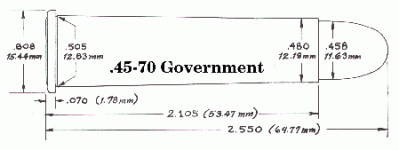.45-70 dies will not work, because the .45-60 case will be too short to reach the step in the crimping die.
You could probably size cases with it, and perhaps seat the 300 gr. bullets standard for the .45-60, but couldn't crimp the case into the bullet.
Crimping the case firmly into the bullet is critical for lever-action rifles. The bullet in each cartridge, while in the magazine tube, is under pressure from the heavy spring of the tube. Consequently, it must be firm in the case to keep it from being pushed into the case, especially during the recoil of firing.
You're in luck. The longtime standard bullet for the .45-60 is a 300 gr. lead flatpoint bullet. The mould for this bullet is still made by Lyman, the 457191, but most shooters use it in the .45-70 (where it is also a very good lighter bullet for deer and plinking).
Your 1876 Winchester's rifling is made to stabilize this 300 gr. bullet. It may not stabilize heavier bullets. I would not use 300 gr. jacketed bullets continually in that rifle; its softer barrel steel will wear quicker. But a few dozen rounds over the space of a few years wouldn't hurt.
Gad Custom Cartridges sells .45-60 ammo for $28 for 20 cartridges. Presumably, the cases are made from .45-70 brass.
It also sells bullets -- 340 gr. lead flatpoints, for $20 per 100.
Check them out at
Gad Custom Reloaded Cartridges and Shell Reloading Services
The best price in obsolete caliber dies are those made by C-H. I'm unsure if C-H makes .45-60 dies, but look for yourself at
CH4D
C-H makes a TON of dies for obsolete calibers, so I'd expect it offers .45-60 dies.
Don't let some ignorant Slackjaw tell you that you can use .45-70 data in that old rifle, or increase its ballistics. The 1876 is a weak action, not nearly as strong as the 1886 Winchester.
The 1876 is simply an oversized 1873 Winchester, another model not noted for its strength.
It was plenty strong in its day with black powder, but can be damaged or blown with too much, or the wrong kind of, smokeless powder.
This said, Cartridges of the World 8th edition recommends IMR4198 -- 25 grs. -- under the Lyman 457191 bullet that typically runs 300 to 320 grains, depending on bullet alloy. This gives about 1,400 fps.
Handloader magazine No. 111 (p. 18) of Sept./Oct. 1984 contains a few load suggestions from Ken Waters.
He suggested trimming .45-70 cases to 1.89 inches.
Waters suggested using 300 gr. hollowpoints, but he doesn't say whether they should be lead or jacketed. I suspect jacketed.
With a 300 gr. bullet, Waters said that MAXIMUM loads would be:
2400 - 20 grs.
IMR-4227 -- 22 grs.
IMR-4198 -- 24 grs.
Because these are considered MAXIMUM loads, I'd reduce these loads by at least 10 percent.
If you use the 340 gr. bullets from Gad Custom Cartridge, then I'd reduce these loads by 15 percent.
Do NOT use a wad of tissue, felt wad or any kind of wad on the powder, to keep it close to the primer, regardless what you're told by the Slackjaws.
This practice can damage the chamber by leaving a ring in it.
If you plan to reload with black powder, use FFG or use Pyrodex RS grade. I would not use Hodgdon 777 as it's tricky stuff.
With black powder or Pyrodex, fill the case to within 1/4" of the case mouth. The seated bullet will compress the powder slightly, a condition at which it ignites and burns best.
Use pure lead, or very soft lead, bullets if you use black powder or Pyrodex. These bullets should be lubricated with a soft, moist lubricant designed for black powder: SPG, Lyman Black Powder Gold or a homebrew lubricant composed of:
1 part mutton tallow
1 part canning paraffin
1/2 part beeswax
All measurements are by weight, not volume.
This homebrew lubricant recipe, named after me some years ago as Gatofeo No. 1 Lubricant, is based upon a factory bullet recipe from the 19th century. The ratios are the same, but the ingredients are more specific than the old recipe I found.
Mutton tallow is sold by Dixie Gun Works.
Use real beeswax. Toilet seals sold years ago were once made of beeswax, but have been petroleum-based for the past dozen years or so. Take the time to find real beeswax, the synthetic stuff makes an inferior bullet lubricant.
Petroleum-based lubricants, such as those used with smokeless powder, create a hard, tarry fouling when used with black powder or Pyrodex. You need a lubricant that is based on natural fats, oils or greases to avoid this.
Yes, canning paraffin is a petroleum product but apparently it lacks the hydrocarbons that cause the hard, tarry fouling.
When you order from Gad Custom Cartridge, ask if they use a black powder lubricant. This lubricant will also work fine with smokeless powder.
You have a nice, old rifle. Take care of it by treating it kindly. It's powerful enough for deer, but I wouldn't tackle larger game with it. Winchester introduced it to provide a rifle with ballistics a little better than the .44-40, but it's not nearly in the same league as the .45-70.
The above should get you started. Let us know how it works out.



